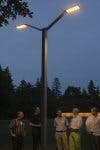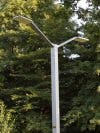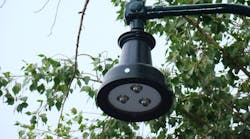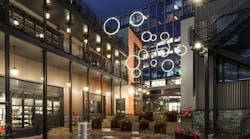The Philips Equinox street lights comprise two optical modules on a 4 m tall square-section mast. The optimum spacing of the street lights is 8 m apart, which provides an average ground illumination of 10 lux.
Each optical module contains 18 white and amber LEDs - six 3W white Luxeon III LEDs and 12 amber 1W Luxeon I devices, supplied by Lumileds Lighting. The luminaires are available in a series of factory-selected color temperatures - 2700 K, 3200 K or 4000 K - to provide warm white lighting.
Four lampposts have been installed by Ede local council, which will monitor the project to gain experience for future lighting systems. In the long run, LED lighting is likely to replace a large proportion of the lamps used in Ede.
By 2008, Philips expects that luminaries incorporating LEDs will also be available for residential areas and major roads.
With a lifetime of 50,000 hours, the LED lamps should not have to be changed for 12 years when lit for an average of 11-12 hours a day.
In contrast, conventional street lamps typically last around 12,000 hours. Replacing them can be hazardous, time-consuming and costly.
In an article published by Reuters, a Philips spokesperson said, "The life span of a street lamp is no longer limited by the lamp, but by the pole."
The cost savings associated with the use of LED luminaires more than compensates for their higher initial cost.








